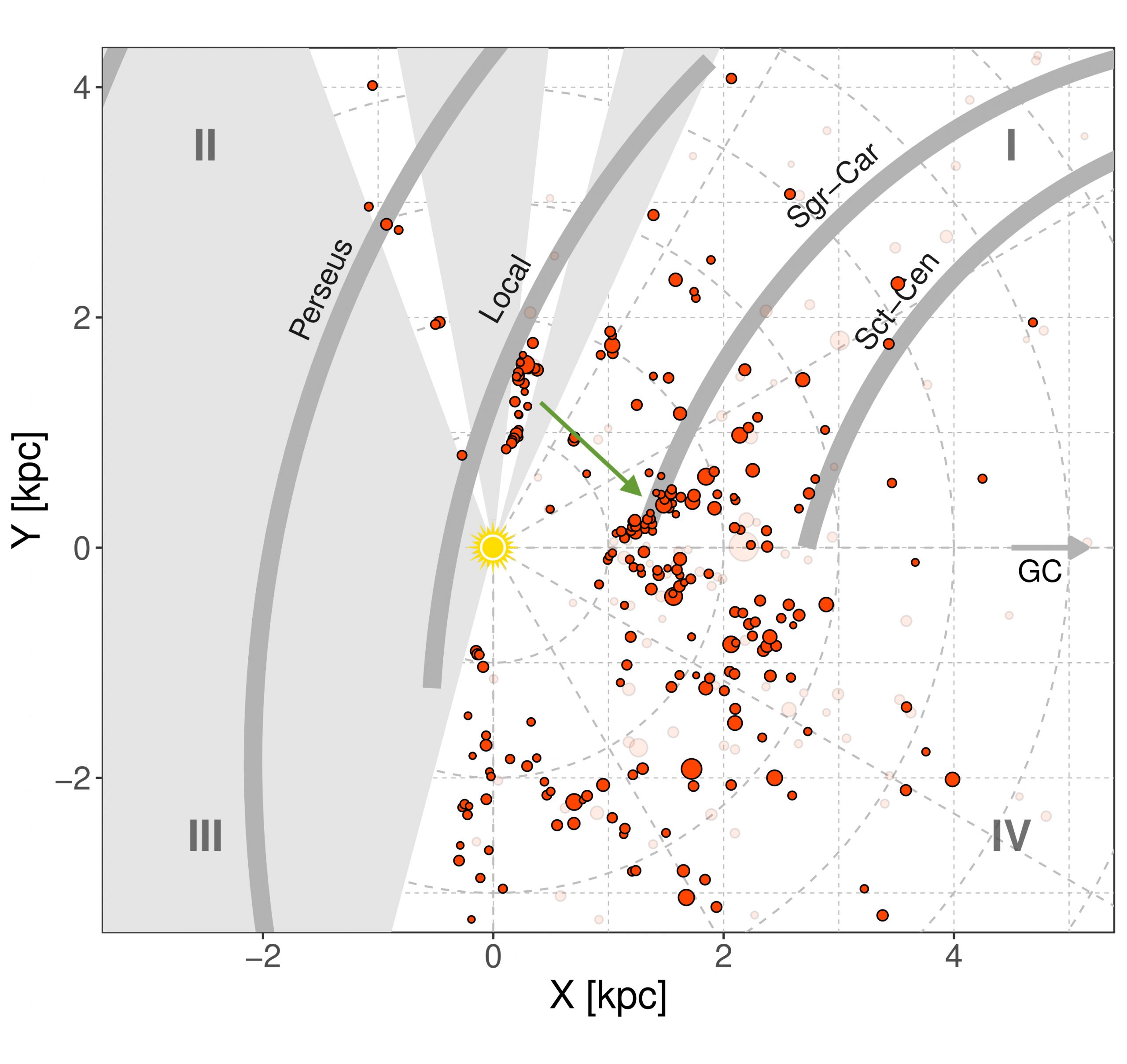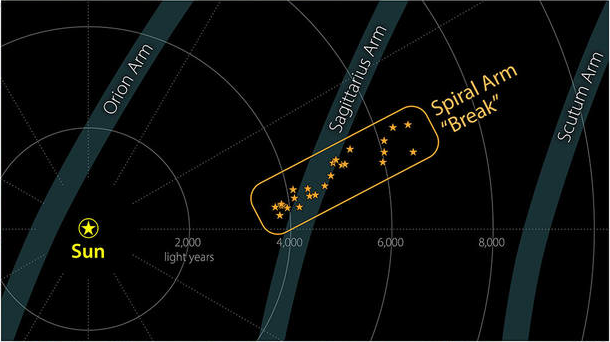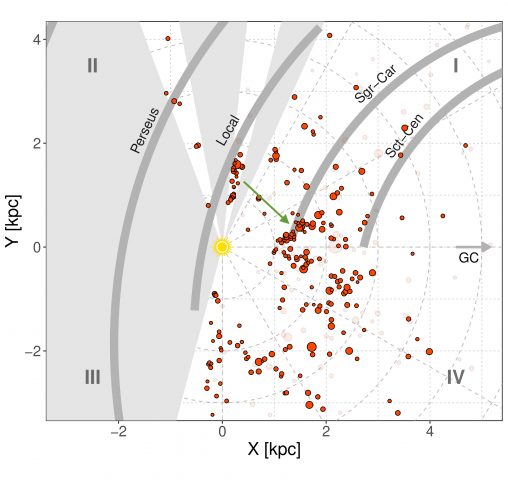The true face of Lushan is lost to my sight, for it is right in this mountain that I reside.
Su Shi (1037 - 1101): Written on the Wall of Xilin Temple (at Mount Lushan)
Since the last edition of the COIN Residence Program, researchers working in the SPICY project had a suspicion that there was something not quite expected emerging from the Sagittarius arm (Figure 1).
At that point, it was not possible to determine for sure what this apparent organization of the young stellar objects in the SPICY catalog meant. It could be evidence of an unknown galactic structure, an effect of data projection, or some other spurious effect identified by eye due to our intrinsically human, and never-ending, search for patterns in nature (aka Pareidolia). The team was not the first to pose this question (check a summarized history of this subject in Kuhn et al, 2021 - Appendix A).
Nevertheless, this hypothesis was intringing enough to motivate a detailed investigative work aiming to confirm the presence of an unidentified feature in the Milky Way’s spiral structure. The strategy then became to gather a larger team of domain experts, combine data from different sources in a coherent framework and check if the evidence was still there.
This task was far from trivial. Although sub-structures like spurs and feathers are known to exist in other galaxies, identifying them in the Milky Way is challenging due to our position inside the galaxy.

Figure 1: Highlight of the initial distribution of YSO candidates in the SPICY catalog.
By combining a series of complementary techniques, the team was able to confirm that the initial YSO positions seen in the SPICY catalog were also traced by star-forming regions, masers, and dust maps. This result constitutes the first direct evidence of a 3000 light-years structure strongly deviating from the Sagittarius arm. It is a rich laboratory where we can closely study star-forming regions that are big enough to be compared with what we know in other galaxies.
What naturally emerged from a self-organized collaborative effort ended up identifying a totally new feature of our Galaxy -- another important step in understanding our cosmic neighborhood and our place in the Universe.
Read more: Astronomers Find a ‘Break’ in One of the Milky Way’s Spiral Arms (NASA press-release)
Reference: Kuhn et al, A&A 651, L10 (2021)

Figure 2: Close-up illustration of the new structure (Credit: NASA/JPL-Caltech)

